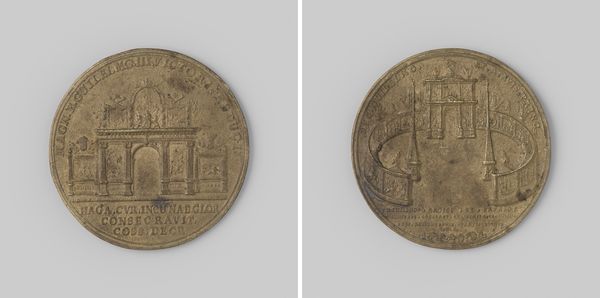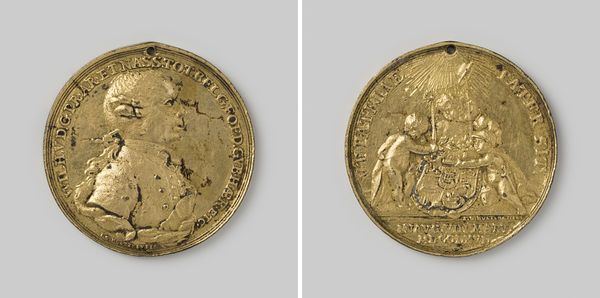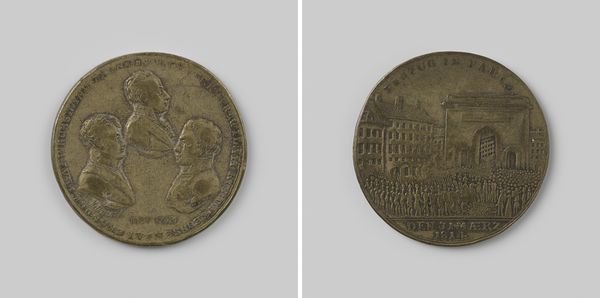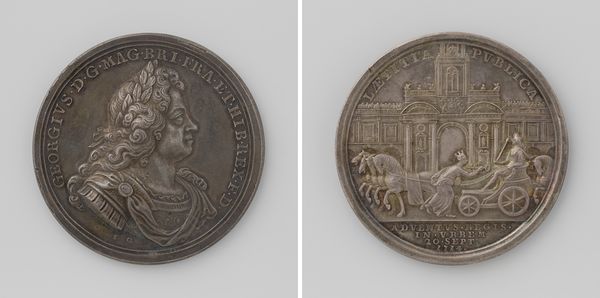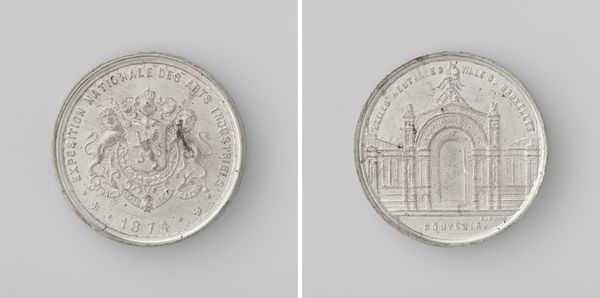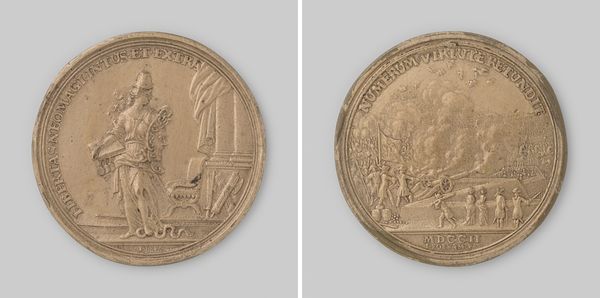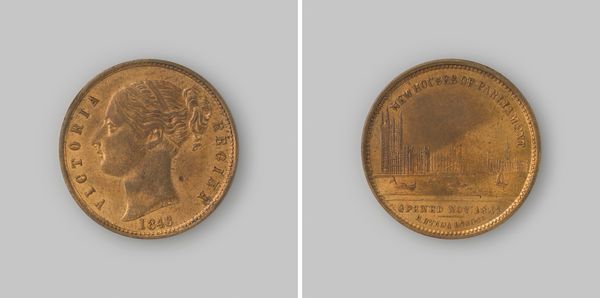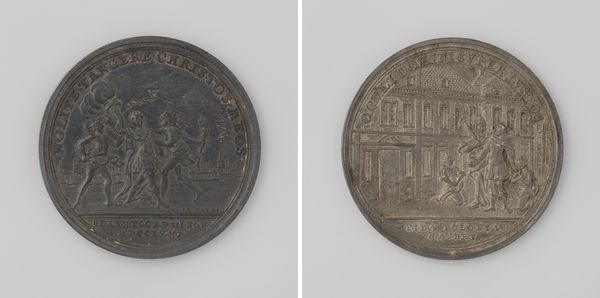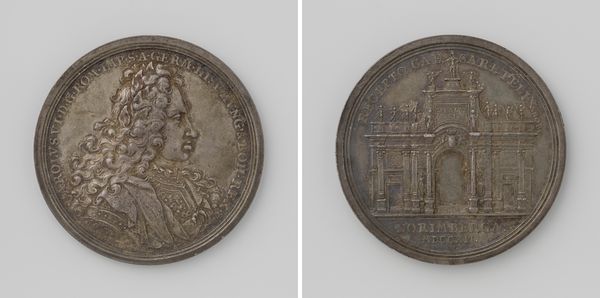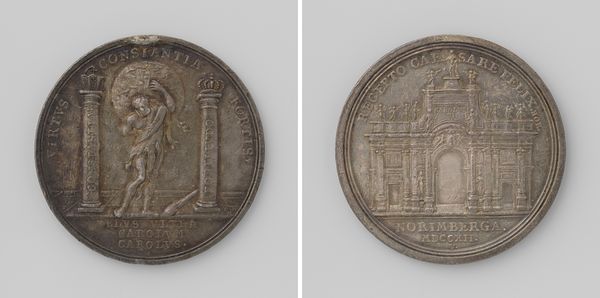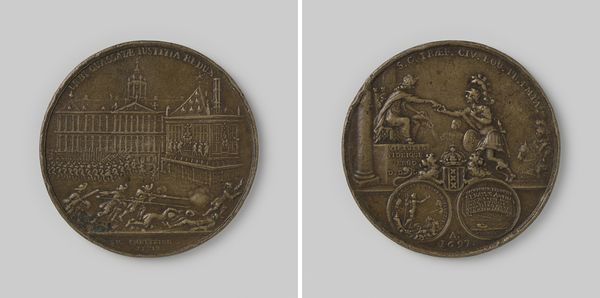
print, metal, engraving
# print
#
metal
#
old engraving style
#
woodcut effect
#
round design
#
metallic object render
#
history-painting
#
engraving
Dimensions: diameter 3.2 cm, weight 11.92 gr
Copyright: Rijks Museum: Open Domain
Curator: Here we have a fascinating engraved metal print titled "Expositie van Industriële Kunst 1874" by A. Fisch, created in 1874. What are your initial impressions? Editor: Well, its diminutive scale immediately brings to mind circulation and exchange, not just of goods, but of ideas. The imagery is fascinating, an interesting attempt at miniaturization, I'd say. Curator: Indeed. From a formalist perspective, the circular composition is striking, creating a self-contained universe. The heraldic imagery on one side contrasts nicely with the architectural representation on the other, don’t you agree? The balance is cleverly achieved. Editor: Certainly. Considering its materiality, what kind of labor went into producing this print? Was it mass-produced for a broad audience, or intended for a more elite circle interested in industrial arts? The very notion of 'industrial art' hints at larger questions about the integration of manufacturing with creative production. Curator: An excellent point. Structurally, observe how the artist uses the circular format to frame both the crest, with its symmetrical balance of lions, crown and coat of arms, and the depiction of the industrial exhibition, emphasizing lines and architectural mass. Editor: Absolutely. And it would be revealing to explore the conditions surrounding its creation, which industries were thriving, and what the state’s role was in promoting industrial advancement through exhibitions like this. It provides a context for interpreting those symbols and the idealized representation of progress through labor. Curator: The symbolic elements of the crest speak to national identity and power, particularly the heraldic figures and royal symbols, while the industrial building, despite its small scale, is intended to be evocative of modernity and achievement. Editor: Thinking about the engraving technique, you have to wonder about the artisanal labor involved versus the rising mechanization. What material constraints were there, and how did they affect the design decisions Fisch made? The physical limitations inherent in metal engraving certainly contrast with the ambition represented by the exhibition building itself. Curator: Considering it as a closed object, the success lies in the clever arrangement of imagery that offers multiple interpretations—as a commemoration, a symbol of state power, and a nod to industrial innovation. Editor: Right, and I am curious about the impact on the labor market and how the piece reflected the social tensions of that particular historical and material moment. Did it celebrate innovation while downplaying human cost, I wonder. Curator: It provides quite a rich text for further examination, doesn't it? Editor: Precisely. This small object encapsulates a complex discourse surrounding art, industry, and national identity.
Comments
No comments
Be the first to comment and join the conversation on the ultimate creative platform.

